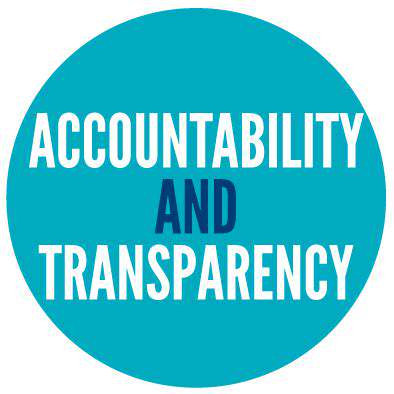Guide to Finding a Reputable Pet Rescue

Finding Reputable Rescuers
Searching for a trustworthy pet rescue requires careful vetting. Organizations worth considering typically operate with full transparency, openly discussing their adoption procedures, financial practices, and animal care standards. Top-tier rescues maintain clear mission statements and actively participate in community dialogues to uphold accountability. While an active online presence can be helpful, always verify the accuracy of the information presented.
Potential adopters should feel comfortable asking direct questions. Contact the organization to inquire about their policies, daily operations, and specific animal needs. The depth of knowledge and enthusiasm in their responses often reveals their genuine dedication to animal welfare. True commitment extends beyond basic sheltering to creating environments where animals can truly flourish.
Verifying Legitimacy and Licensing
Confirming proper licensing remains a critical step in evaluating any rescue's credibility. Reputable organizations maintain current licenses and registrations, demonstrating their adherence to legal and ethical standards. This information should be readily available on their website or through direct inquiry, helping distinguish legitimate operations from potential scams.
Researching an organization's history provides valuable insights. Seek out testimonials from previous adopters and volunteers. Consistent positive feedback and successful adoption records strongly indicate a reliable operation. Personal recommendations often prove most trustworthy when assessing an organization's reputation.
Assessing Animal Care and Sheltering Conditions
Physical inspections of facilities offer concrete evidence of an organization's commitment. Look for clean, spacious environments that meet animals' basic needs. The best rescues prioritize animal comfort and health through their facility design and maintenance. Well-cared-for animals naturally present better adoption prospects.
Inquire about medical protocols. Comprehensive healthcare programs including vaccinations and preventative treatments demonstrate serious commitment. The quality of veterinary care directly reflects an organization's overall priorities and operational standards.
Transparency and Accountability: Examining the Rescue's Operations

Transparency in Governance
Effective governance requires open communication about organizational decisions and policies. This openness allows supporters to understand operations and verify ethical practices. Publicly accessible records and data initiatives form the foundation of trustworthy operations, enabling proper oversight and identification of potential concerns.
Transparent practices encourage community participation. When information flows freely, individuals can better understand issues and contribute meaningfully to solutions. This engagement strengthens organizational effectiveness and community relationships.
Accountability Mechanisms
Robust accountability systems ensure organizations remain focused on their core mission. These structures provide checks and balances for decision-making processes. Well-designed accountability measures effectively prevent misconduct and promote ethical operations.
Various approaches exist, including independent oversight committees and transparent reporting systems. Proper implementation and enforcement of these systems determines their actual impact on organizational integrity.
The Interplay of Transparency and Accountability
These two principles function symbiotically. Transparency provides the information needed for evaluation, while accountability creates structures for addressing concerns. Public scrutiny and open information access together create responsible governance models.
Without transparency, accountability measures lack necessary context. Conversely, strong accountability enhances transparency's value by ensuring identified issues receive proper attention.
This combination creates a positive feedback loop that builds trust, improves operations, and ultimately benefits all stakeholders.
Organizations built on these principles form the foundation of effective animal welfare systems.
Implementing transparent, accountable practices remains essential for sustainable operations and community confidence.
Successful organizations understand how these elements work together. This understanding ensures proper resource allocation and mission-focused decision making.
Animal Care and Welfare: Assessing the Rescue's Standards
Assessing the Rescue's Commitment to Animal Well-being
Quality rescues approach animal care holistically, addressing physical, emotional, and psychological needs. They recognize that trauma impacts recovery and adjust care accordingly. Clear documentation of procedures indicates serious commitment to animal welfare.
Understanding individual animal needs separates exceptional rescues. This includes recognizing unique histories, temperaments, and medical requirements. Thorough evaluation processes ensure appropriate placement matches, demonstrating true dedication to animal welfare.
Evaluating the Rescue's Physical Facilities
Facility inspections reveal much about operational priorities. Proper space, ventilation, and temperature control form basic requirements. Clean, well-maintained environments prevent disease spread and promote animal health.
Quality facilities incorporate enrichment opportunities. Spaces allowing natural behaviors like climbing or social interaction significantly reduce stress. Thoughtful facility design directly impacts animal well-being and adoption success rates.
Understanding the Rescue's Adoption Process
Structured adoption procedures benefit both animals and adopters. Thorough applicant screening ensures suitable matches. Questions should explore lifestyle, experience, and living conditions to guarantee proper long-term care.
Transparent adoption processes include full disclosure of animal histories, medical conditions, and behavioral traits. This openness prepares adopters for successful long-term relationships with their new pets.
Investigating the Rescue's Financial Transparency
Financial openness indicates organizational stability. Clear records of income sources and expenditure allocations demonstrate responsible management. Quality rescues willingly share how donations directly support animal care.
Transparent financial practices build donor confidence. Detailed reporting shows exactly how contributions impact animal welfare and operational effectiveness.
Scrutinizing the Rescue's Licensing and Regulations
Proper licensing confirms legal operation. Verification through local authorities ensures compliance with animal welfare laws. This due diligence protects both animals and supporters.
Regulatory compliance demonstrates professional standards. Meeting licensing requirements shows commitment to operating within established animal care guidelines.
Community Involvement and Support: Examining the Rescue's Outreach
Strengthening Local Communities
Community engagement forms the backbone of successful rescue work. Building relationships creates shared responsibility for animal welfare. Educational initiatives with schools, businesses, and organizations raise awareness and foster support networks.
Strong community ties provide essential resources during crises. Local knowledge, volunteer support, and collaborative partnerships enhance rescue capabilities and effectiveness.
Supporting Vulnerable Populations
Special consideration for vulnerable groups demonstrates comprehensive care. This includes tailored approaches for elderly adopters, individuals with disabilities, and economically challenged families. Accessible resources ensure equal opportunity for all community members to participate in animal welfare.
Addressing unique needs creates inclusive environments. Specialized services and accommodations demonstrate true commitment to community-wide animal welfare.
Promoting Public Awareness and Education
Preventative education reduces future rescue needs. Workshops on responsible pet ownership, basic animal care, and emergency preparedness empower community members. These initiatives create safer environments for both animals and people.
Knowledgeable communities require fewer interventions. Educational programs represent proactive investments in long-term animal welfare solutions.
Engaging with Local Businesses and Organizations
Business partnerships multiply rescue capabilities. Local companies can provide space, supplies, or expertise during emergencies. These collaborations create robust support networks that benefit entire communities.
Developing Partnerships with Other Agencies
Coordination with emergency services enhances response effectiveness. Joint training with police, fire departments, and medical services improves crisis management. Clear communication protocols ensure seamless cooperation during emergencies.
Evaluating and Improving Outreach Strategies
Continuous assessment maintains program relevance. Community feedback and performance data guide strategic improvements. This adaptive approach ensures outreach efforts remain effective as community needs evolve.
Ongoing evaluation demonstrates commitment to excellence. Data-driven adjustments keep programs aligned with current challenges and opportunities.
Read more about Guide to Finding a Reputable Pet Rescue
Hot Recommendations
- Review: [Specific Brand] Small Animal Cage
- Why Rescuing Pets Saves Lives
- Best Pet First Aid Kits [What to Include]
- How to Help Stray Animals in Your Community
- Guide to Adopting a Pet When You Have Kids
- Top Reptile Heat Lamps
- Heartwarming Rescue Stories That Will Inspire You
- Review: [Specific Brand] Bird Cage
- Best Aquarium Filters [2025 Review]
- Review: [Specific Brand] Smart Litter Box







![My Experience Rescuing a Small Animal [Story]](/static/images/33/2025-05/AJourneyHomeandCaringfortheTinyTraveler.jpg)
![My Pet's Goofy Antics [Story]](/static/images/33/2025-05/TheUnexpectedMasterpieces.jpg)
![Review: The [Specific Brand] Smart Pet Feeder](/static/images/33/2025-05/ConnectivityandAppIntegration3AASeamlessExperience3F.jpg)

